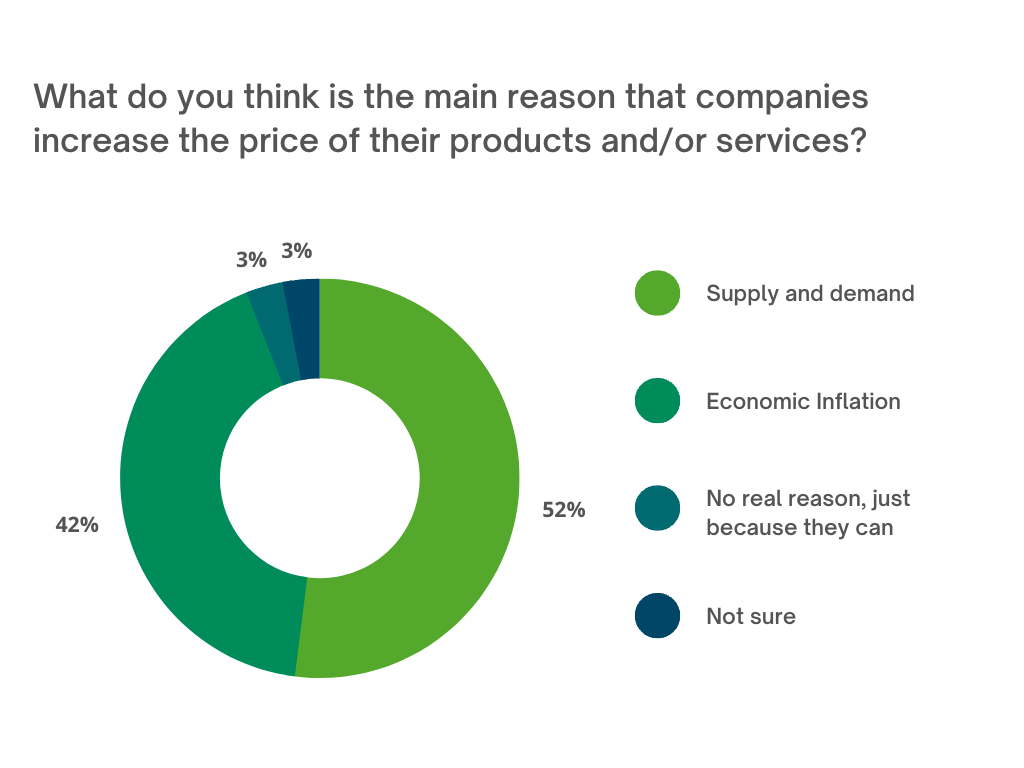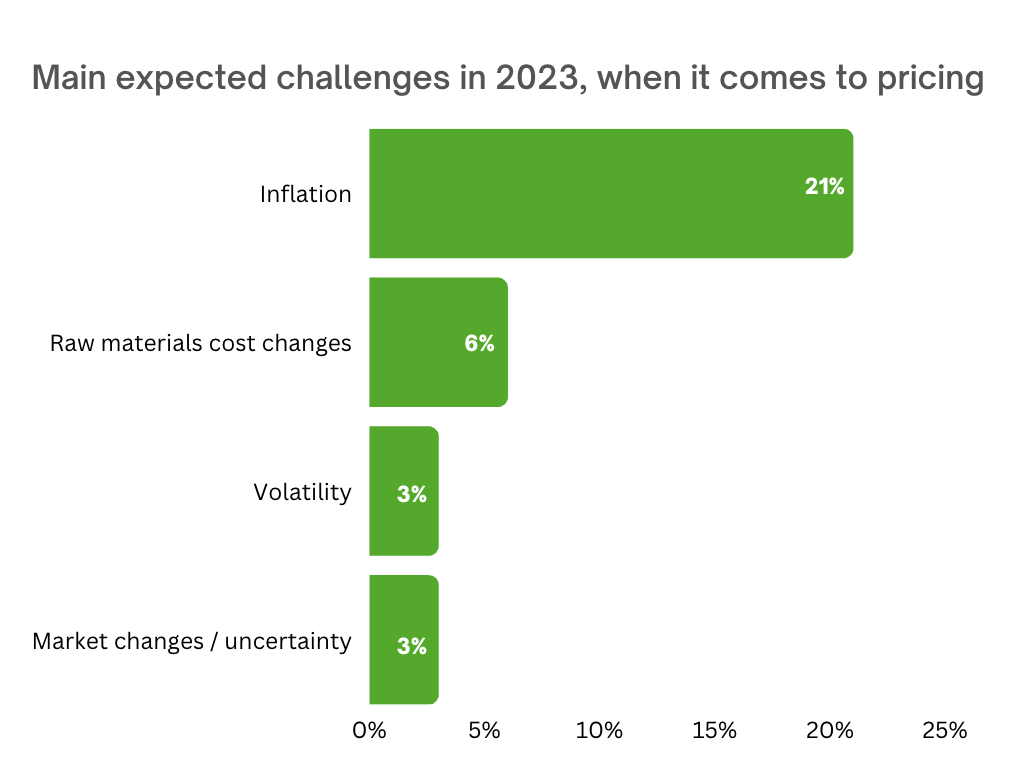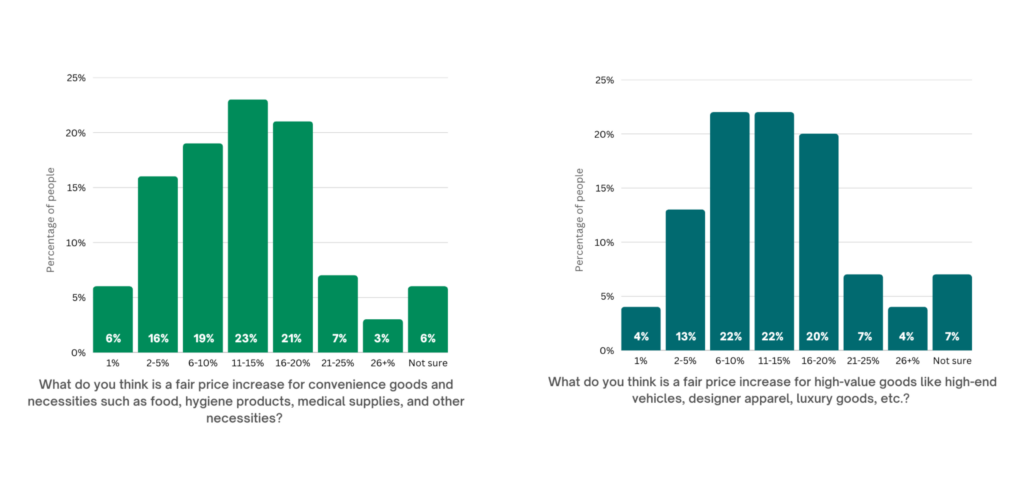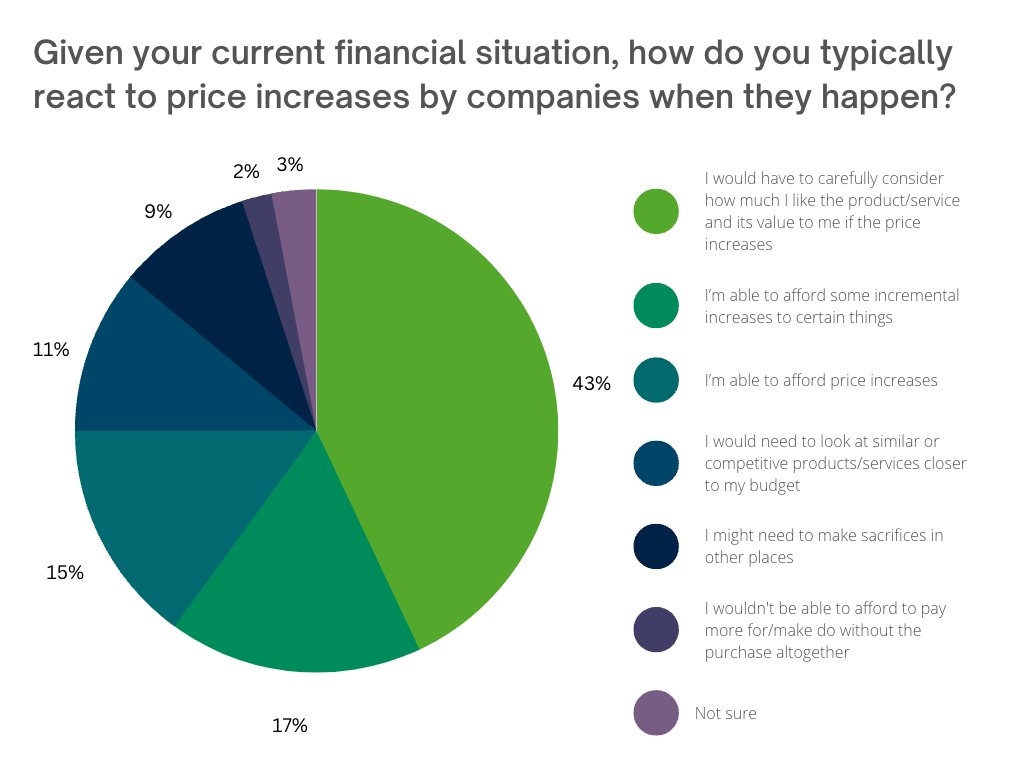
The global economy has been in a state of fluctuation for the past few years; a direct result of a pandemic and more recently the war in Ukraine – something that is also impacting businesses and supply chains around the world. Today, more businesses head towards economic uncertainty and have either already increased price points to help lessen the blow, or are thinking about doing so in the near future.
Recently, we asked 1,500 U.S. adults what they think about price changes and how businesses can effectively communicate those changes without jeopardizing their most important stakeholder relationships or their bottom line. Here are a few key considerations to make before changing your prices.
Why Do Customers Think Businesses Raise Their Prices?
There are many reasons why businesses may increase the prices of their products or services, including supply and demand (i.e. increases in popularity), supply chain issues, or economic inflation.

Half Say Price Changes Occur Because of the Supply Chain
Our research revealed that more than half (52%) of people believe that price increases are due to supply and demand issues. While this could be linked to increased popularity in some cases, supply chains have also been directly affected by the war in Ukraine, and certain products have now become increasingly unavailable or more difficult to access.
Among Vendavo customers, thought leaders, and an economist at Vendavo’s Growth Profitability Summit in Sep 2022, we learned that all functions – particularly including those managing the supply chains – must work together to achieve or maintain pricing excellence. When companies connect pricing with supply chain, support, sales, finance, product management, and the c-suite and get them to speak with pricing in mind, companies will arrive at a price that satisfies both their customers and shareholders.
42% Credit Economic Inflation for Price Changes
Over two fifths of people (42%) believe that price increases are understandable due to economic inflation; as the cost of everything has gone up, it’s an understandable cause and effect.
As we have previously researched, the impact of inflation has impacted both businesses and consumers. Although lower than July 2022, when the rate of inflation reached just over 9%, today, the current rate of inflation in the US is still over 4.5 times higher at 6.41%, than what it was in 2021.
Some Americans Still Blame Company Profits for Price Changes
Despite more than 90% of people understanding that businesses raise their prices for legitimate reasons, there’s still a small number of Americans that believe companies focus on profitability for increased prices.
3% of our respondents believe that companies increase their prices whenever they feel like it, primarily for profit, just because they can.
Anticipated Pricing Challenges in 2023
As recent history shows, global events, war, accidents, and natural disasters that disrupt supply chains are not easy to predict, however changes to inflation are a typical consequence. When it comes to pricing both products and services, 21% believe that inflation is the main challenge to overcome in 2023.

What’s a Reasonable Price Increase?
With inflation naturally comes price rises. However, what an organization deems to be fair, doesn’t always translate from business to customer. We surveyed customers to find out what they deem to be fair for convenience goods and necessities, such as food, hygiene products, medical supplies and other essentials, and for high value goods like high-end vehicles, designer apparel, luxury goods.

Almost a third (30%) of Americans say price increases over 16% would be reasonable for convenience goods – with the average increase being 12%.
For high-end/luxury goods, our research shows that over two fifths (44%) agree that an increase of 6-15% would be appropriate, based on what’s happening in the economy today.
When asked how they would react to a company increasing their prices, 43% stated price increases would force them reconsider how much they really like a product/service.

This highlights the importance of showing value in your products and services and letting customers know why prices are changing. By doing so, businesses still have a chance to retain almost 80% of existing customers, despite 1 in 5 admitting they would need to look elsewhere for services or products closer to their budget, or make sacrifices in other places.
To Retain Customers, Communicate Price Changes
A third of businesses now describe their pricing functionality as proactive, but still just under a fifth are being reactive, looking at pricing in the wake of an event.
Pricing is one of the key areas that impacts both business and consumers, yet, data in our latest our Pricing Excellence Report and Outlook 2023 highlights over half (51%) of businesses are still not prepared for pricing organization – a figure that has increased since 2021.
As our report shows, many organizations have now concluded that having a dedicated pricing team can help decrease the pressure put on other teams such as marketing, sales and finance departments. This not only helps to streamline the business process but also allows those teams to focus on wider goals and objectives.
Not only has this meant recruitment for pricing professionals has increased from 22% to 34%, but now there is a greater need for pricing technology — one of the main drivers of agile pricing responses to market changes.
During economic flux or turmoil, businesses often pull the pricing lever and change their prices. Afterall, pricing is the fastest lever to pull for profitability. Communicating these price changes is imperative to ensure customer satisfaction and retention.
As the cost of living and manufacturing grows, profit margins are shrinking which is resulting in many businesses and industries needing to review and possibly increase their pricing. Many organizations are tempted to standardize price increases across the board but that often results in loss of customer trust and leads to customer dropout. We are all consumers, so be sure to think about these insights when setting your prices for end users.
Key Takeaways:
- Inflation remains a major challenge for businesses as our Pricing Excellence Report and Outlook shows. Yet, customers understand that it’s one of the key reasons that businesses may need, or choose to increase their prices.
- 15% of people believe they are financially capable and would have no issues paying higher prices for products or services. However, organisations should prioritize showing value to retain existing customers and keep others from looking elsewhere.
- On average, Americans are prepared to pay an increase of 12% on everyday essentials and high-end luxury commodities.
- Communicating price changes, especially if raising prices, is crucial to retain customers, particularly during more financially challenging times.
*Survey conducted on 1,500 U.S. adults between 12th to 16th January 2023